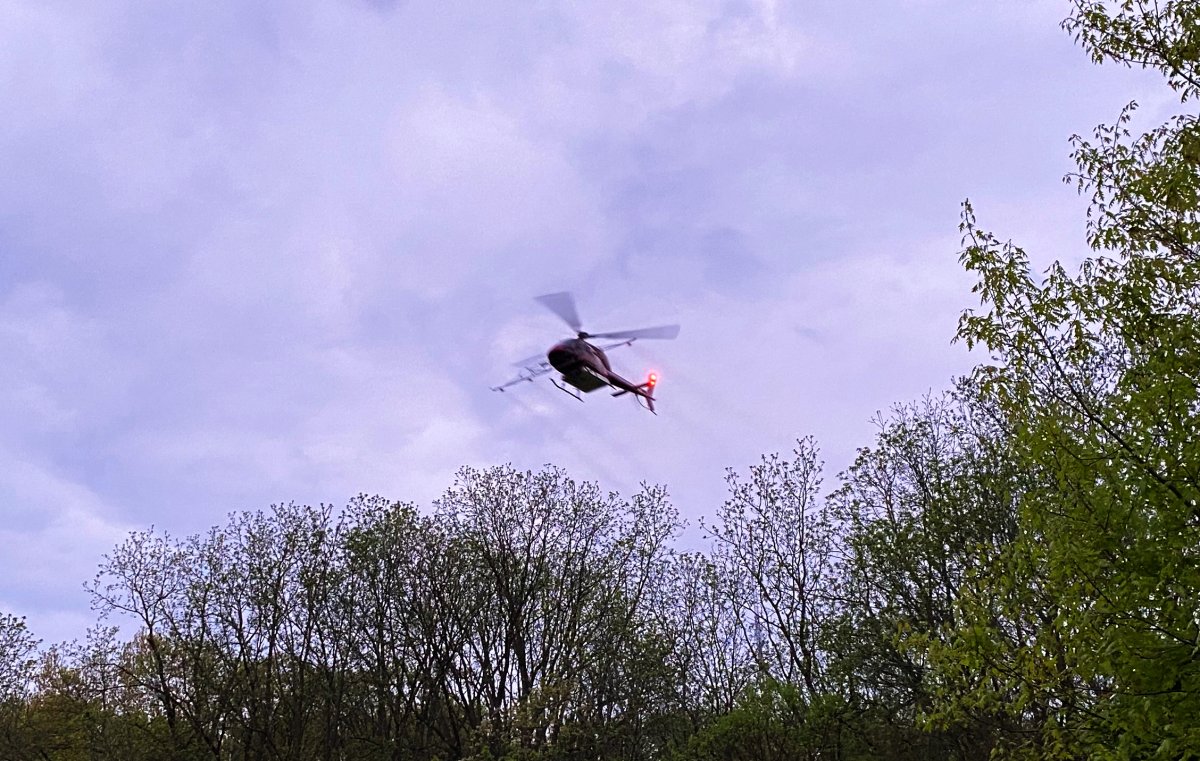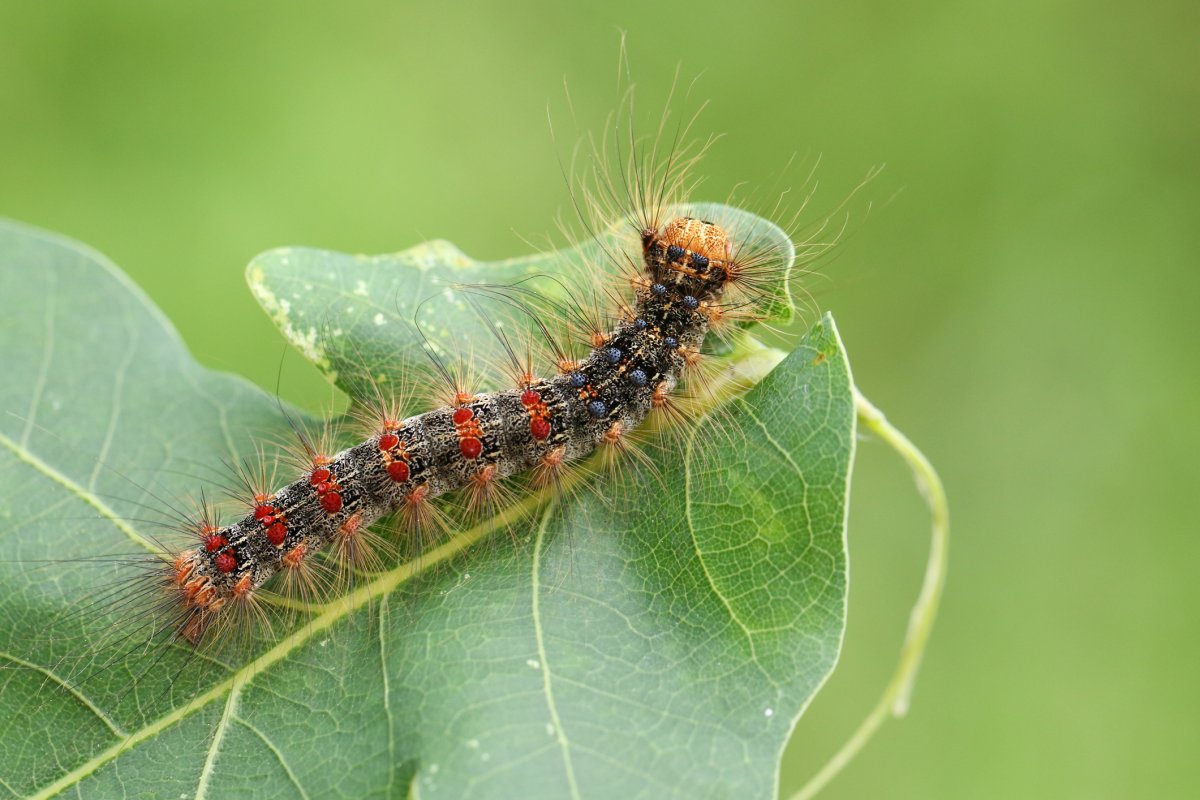Local residents living around five city parks were likely awakened Thursday by the roaring sound of a low-flying helicopter being used as part of an city initiative to combat the European gypsy moth.

The invasive species was dealt an early morning strike as the chopper, hovering around 15 to 30 metres above the trees, sprayed a biopesticide over London’s Crestwood Woods, Fairmont Park, Grand View Park, Griffith Street Park, and Somerset Woods between 5:30 and 6:30 a.m.
The timing of the spraying, the first the city has done since 2009, comes as roughly 90 per cent of gypsy moth eggs are expected to have hatched in the city, according to a map released by city hall from consultant BioForest.
“We’ve been monitoring the conditions over the last few weeks as far as the development of the pest… and also the development of the foliage of the trees,” said Jill-Anne Spence, the city’s manager of urban forestry.
“We needed 90-per cent egg hatch and a leaf development (of) between 40 to 50 per cent, and those conditions were met.”
Thursday’s spraying is just one weapon the city has used to fight the invasive pest, which has also included the ongoing removal of thousands of gypsy moth egg masses, each of which can contain between 100 to 1,000 caterpillar eggs.
The European gypsy moth, introduced to North America from Europe 150 years ago and first detected in Ontario in 1969, can eat an average of one square metre of leaves, resulting in significant defoliation if not dealt with, the city says.
Last year, data collected by the city recorded several locations as having severe defoliation, meaning between 80 to 90 per cent of the tree canopy saw leaf loss. Further surveys found that the locations would be hit hard again this year by the gypsy moths, the city says.
Throughout the province, the gypsy moths caused roughly 586,385 hectares worth of defoliation in 2020 compared to 47,203 hectares the year before, according to the Ministry of Natural Resources and Forestry.
Locally, the explosion in gypsy moth caterpillars last year was felt particularly hard in the Municipality of Lambton Shores, with some residents telling 980 CFPL of tallying hundreds if not thousands of caterpillars on their homes.
Currently, the gypsy moth population is 10 times the size it normally is in our area, Spence says. According to the province, outbreaks of the gypsy moth occur every seven to 10 years.
While local crews have been active in scraping egg masses from hundreds of trees, the city says it contracted the spraying of the biopesticide Bacillus thuringiensis subspecies kurstaki, or Btk, “due to the extent of the outbreak, and that it is moving from established locations into new.”
“The benefit is that we’re getting up into the high canopy of the trees where the caterpillars are feeding, and getting a good aerial application of the biopesticide,” Spence said.
“The parks that we identified have oak tree stands, which are some of our very high quality trees. They’re keystone species. They support oak trees, support thousands of different species over their lifetime.”
Planning for the aerial spraying has been in the works for months, Spence said, adding that monitoring of the pests has been ongoing for several years and will continue.
“Today, we’re actually taking samples to see how consistent the aerial spray was performed, and then we will also follow up with how effective it actually was,” Spence said.
“By the end of the summer, we’ll be again looking at defoliation and also, you know, egg mass sizes. That’ll help us to determine how effective this spray was.”
Following the aerial spray, Spence says the city will continue on with other management techniques to deal with the local gypsy moth population.
“We will be working hopefully… with our volunteers to do egg mass scrapings after the female has laid the eggs. We’re also looking at banding using burlap bands to capture the caterpillars,” Spence said.
“These management techniques need to be timed with the appropriate stage that the pest is in its life cycle.”
Information on trapping and dealing with gypsy moths can be found on the City of London website.
More information on the European gypsy moth can be found on the province’s website.
— With files from Andrew Graham








Comments